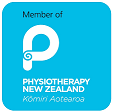
By Atif Razvi – Director & Senior Physiotherapist
Headaches are prevalent in today’s society. If you one of those people out there or of know someone that suffers from migraine headaches, then you or they are not alone, there are many others out there. According to the Neurological Foundation of New Zealand, about 18 per cent of women, mainly between the ages of 15 and 55, and 12 per cent of men experience them.
Recently I attended the Watson Headache Institue foundation course in headache management. This was a real eye opener for me as a clinician and has very much changed my thinking about how I view and manage headaches.
The Watson Headache® Approach is recognised as a scientifically researched method of examination and treatment. The diagnostic accuracy of the Watson Headache® Approach is unparalleled. It can confirm if disorders in the upper neck are responsible for headache or migraine and determine the exact nature of the disorder as well as which spinal joints are involved. There is no guesswork and no cracking or manipulation. Its unique and powerful feature involves temporary reproduction and resolution (easing) of usual head pain. For further information, go to: www.WatsonHeadacheApproach.com
The most common conditions treated include…
* Migraines (with and without aura)
* Tension headache**
* Menstrual migraine
* Cluster headache
* Migraines from ingestants (food/drink)
* Abdominal migraine
* Vestibular migraine
* Trigeminal neuralgia
Tension-type headache
According to the International Headache Society tension-type headache this is the most common type of primary headache and can occur in up to 78% of the general population.People commonly put the occurrence of this type of headache down to fatigue, stress or dehydration but it can occur without any of these events as well. It is typically described as a tight band, squeezing or compressing in nature and can be continuous or short lived.
People suffering from this type of headache will often report tightness in their neck or shoulders when this headache occurs, which the research can now confirm.
Although you feel that the muscles in your head are wound up tight, during an episode of tension type headache there is no increase in the tension of the muscles of the scalp but a significant increase in the tension of muscles in the neck.
Research has found that the lower brainstem of people who experience tension-type headache is sensitised, even when they don’t have a headache. When the brainstem is sensitised it is sitting waiting for a ‘trigger’ (stress/fatigue/dehydration) to set it off and give you a headache.
The lower brainstem sits inside the joints found at the top of the neck and by gently mobilising these joints you can ‘desensitise’ the brainstem so that it’s response to these normal events (stress/fatigue etc) is not to give you a headache.
What will happen when you come to see for your headache
We will spend one hour with and you will receive a comprehensive assessment to find out just where your headache or migraine is coming from. Once that is known we can proceed to treatment. There should be a significant improvement of your symptoms within the first four – five treatments. You should not have to come in for treatment twice a week for the rest of your life, we will give you strategies to maintain this improvement at home.
So take control and give us a call for your assessment
**North City Physiotherapy offers headache management in two of our clinics. Due to the specialised treatment of the Watson Headache method, only selected physiotherapists can provide this. At this stage we can offer this at Titahi Bay Medical Centre and Johnsonville Medical Centre.













